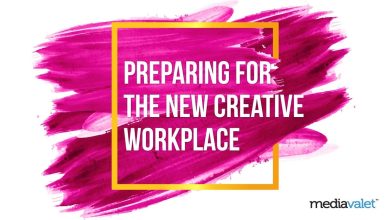CMO’s road to rapid recovery

Brian Gregg, Senior Partner at McKinsey & Company, outlines the five markers that could lead businesses to rapid revenue recovery.
2020 has tested the mettle of every marketer as they try to help lead their companies through health and economic crises.
For businesses, the pace of change has been so swift that it has had a whiplash effect. In a matter of 90 days, we jumped forward ten years in U.S. e-commerce penetration, with similar effects being seen across the globe. Immersed almost exclusively in the immediacy, convenience, value, and safety of digital experiences during the COVID-19 lockdowns, consumers have reset their expectations and preferences, and forced marketing leaders to change their priorities and operating model.
The pandemic has set off a chain reaction of shocks — from a digital surge to brand loyalty shifts (over 70 percent of Americans changed their shopping habits during the shutdowns). While these broad changes and pressures are challenging for many companies, there are some organizations that have emerged stronger than ever, able to both spot granular growth opportunities and move quickly to capture them.
Leading CMOs and growth leaders navigating this historic period of uncertainty have had a steady focus on managing not only the “now” but what comes next. They are positioning their companies for the recovery by reimagining a path forward and prioritizing activities to capture revenue and speed growth. To emerge stronger, marketing leaders should focus on five markers of these frontrunners’ practices:
- Turbocharge e-commerce. Companies need to have a clear understanding of what their customers really want, which has changed significantly in the past six months. For example, customers are embracing contactless shopping and new online-offline shopping behaviors. In turn, companies need to create personalized omnichannel offerings and build in the flexibility to adapt as demand patterns and behaviors shift. One furniture retailer was able to drive a 60 percent improvement in sales in digital channels over just four weeks. The company took a portfolio approach to campaigns, launching multiple versions to test and learn along the way. Through their analysis, they discovered demand for baby beds and tailored campaigns to that customer segment, even offering free child beds for those who had babies born during the COVID-19 pandemic.
- Granularity of opportunity. With a massive shift to digital comes a torrential surge in data, and within that data lie clues and insights about where the pockets of growth are developing or closing. A true mark of going granular is using market- and customer-level insights to inform decision making for activities such as targeting, media spend, and operations. Brands need to retrain their algorithms to ensure they can quickly spot demand signals and act with speed to capture market share. The hierarchy of needs have changed: Consumers are willing to give more information about themselves, while brands are responding to their changing needs.
- Virtual agility. With a big shift to virtual channels, companies are rewiring for speed and virtual agility. Many ‘agile’ characteristics still apply, including situation rooms made up of multidisciplinary teams with key skills (data analytics, sales operations, and design), and an iterative test-and-learn approach to development. These cross-functional squads bring together people with the ability to make rapid decisions and respond effectively in the moment. To maintain agility in a virtual world, marketers need to have the ability to look at their customers in new ways, a commitment to data-driven decisions, and a relentless focus on iterative execution to continually improve.
- Business model reimagination. The future isn’t what it used to be. Companies will benefit from investing the time to really figure out where the next horizons of growth are coming from. While no one knows what the exact contours of the next normal will look like, we do know that things will not go back to the way they were. Marketers will need to systematically monitor trends and indicators, commit to bold changes in marketing strategy and investments, and build agility into the organization to be able to quickly adapt to future changes. Furniture retailer Industry West is a good example of a successful pivot. Before COVID-19, three-quarters of its business was B2B. With offices closing, it needed to go direct to the consumer. Now, 60 percent of its business is DTC, thanks to a shift in product marketing.
- Clearly a stronger emphasis on e-commerce and digital channels is crucial, including consideration of the role of D2C e-commerce channels. One European retailer built a functioning e-commerce platform in 13 weeks. This speed to market is one reason that digital has become such a crucial component of rapid revenue recovery for brands navigating an economic downturn.
- Self-funded growth. Near-term cash management goes beyond cutting budgets. It’s about using this moment to take a clean sheet approach to identifying where the pockets of growth are and directing your funds to them. This will drive rapid revenue recovery as consumer confidence grows.
Move at the speed of relevance to capture growth
While the disruptive forces of the pandemic have introduced big changes, there are also tailwinds where brands will be rewarded if they can spot the range of growth opportunities and quickly accelerate to either capture them or recover lost ground.
Brands that were either already well-positioned in a digital-first world or those that were able to rapidly pivot are rebounding faster. To emerge stronger, marketing leaders must focus on these five markers of success and operate at the speed of relevance.
Source : Adobe








